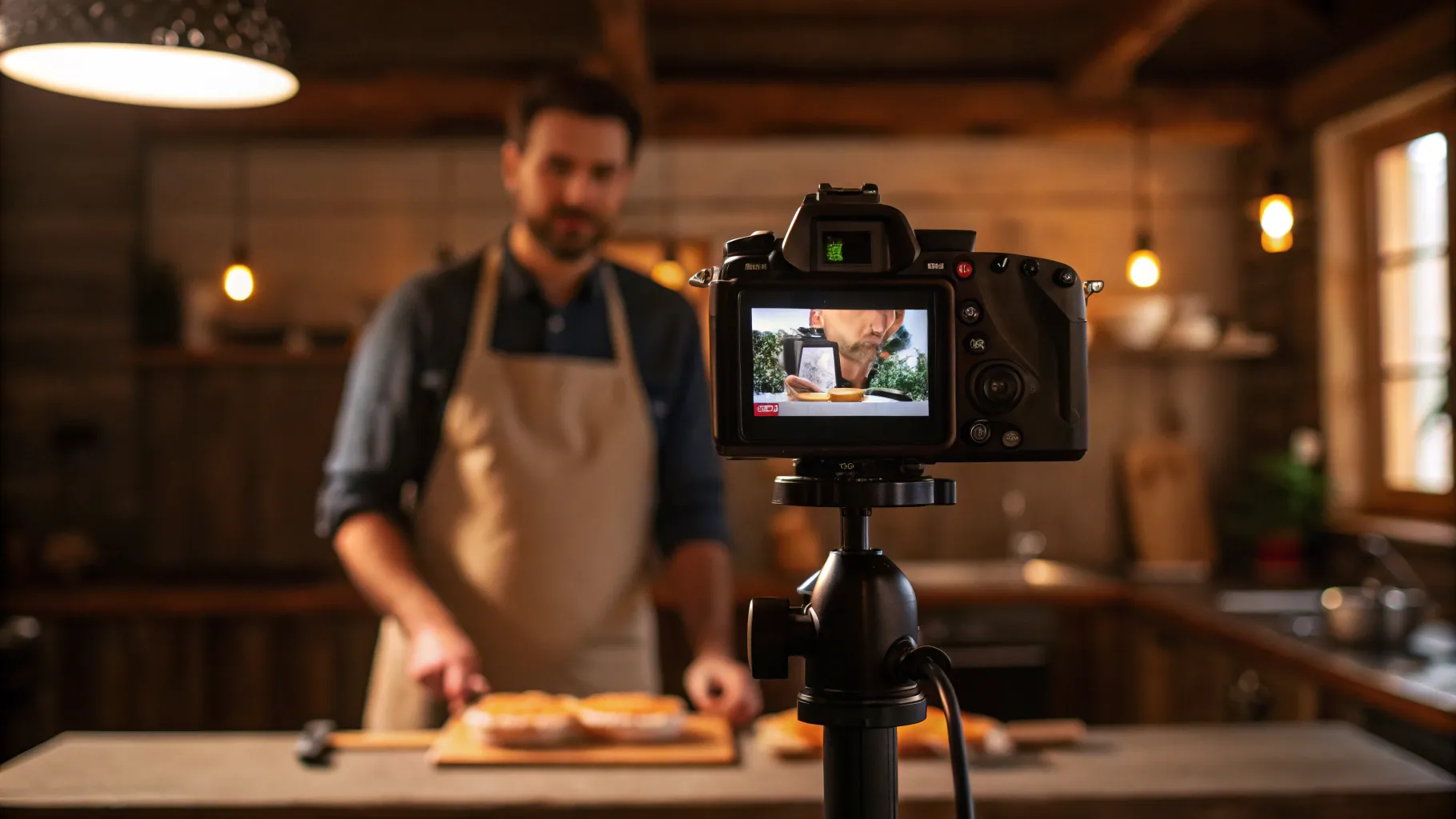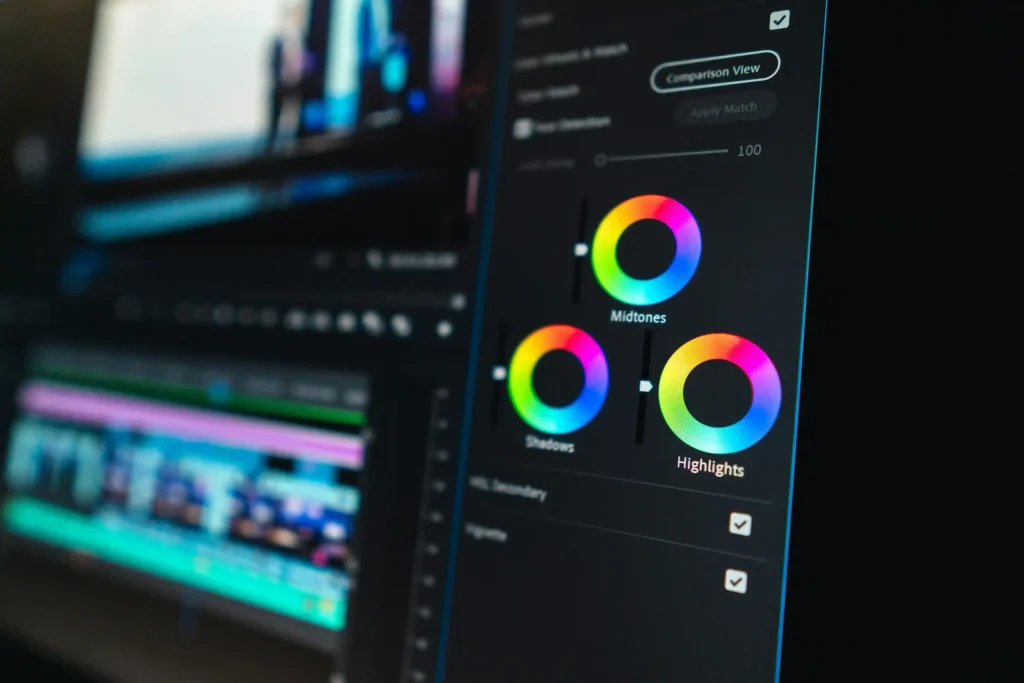How to Make Professional Videos for Business: A Step-by-Step Guide
Oktarina
July 28, 2025
11 min read

In today’s fast-paced digital world, learning to make professional videos for business is a game-changer. Videos have become essential to any business strategy, helping companies engage with their audience more effectively. Whether you aim to raise brand awareness, drive customer engagement, or showcase your products, professional videos can help you stand out and build a strong online presence. They allow you to convey your message visually compellingly, which resonates with your audience and builds trust.
Understanding how to make professional videos for businesses of all sizes is crucial. Even if you’re starting, the right video content can help establish your brand’s identity, communicate your values, and convert views into sales. This guide will take you through the essential steps to create high-quality videos that look professional and serve your business goals—without breaking the bank.
Why Are Professional Videos Essential for Your Business?
Professional videos are more than just visually appealing content; they are essential for growing your business. Videos help build trust, engage your audience, and drive conversions in ways text and images alone cannot. Here’s why they’re crucial:
- Boosts Engagement
Video content grabs attention faster than text or images. Studies show that the brain processes video 60,000 times faster, making viewers more likely to engage with your content. Videos also encourage likes, shares, and comments, which helps increase your reach on social media. Since platforms like Instagram, Facebook, and YouTube prioritize video, your content is more likely to be seen. - Establishes Credibility
A well-produced video shows your audience that your business is professional and trustworthy. High-quality visuals and sound build an emotional connection with viewers, showcasing your brand’s values and identity. Authentic content, like customer testimonials or behind-the-scenes footage, further establishes trust and credibility. - Drives Conversions
Videos are powerful tools for increasing sales. Studies show that 84% of consumers are more likely to buy after watching a product video. Whether it’s a product demo or explainer video, videos help potential customers understand your offerings better and encourage them to take action. Including a clear call-to-action (CTA) in your videos boosts conversions by guiding viewers to the next step. - Enhances SEO and Organic Reach
Adding video to your website increases visitors’ time on your page, signaling to search engines that your content is valuable. Video also boosts social sharing, which can improve your SEO ranking. Optimizing your video titles, descriptions, and tags on platforms like YouTube can drive more traffic to your site. - Increases Brand Awareness
Videos are an effective way to communicate what your brand stands for and differentiate yourself from competitors. A well-crafted video can leave a lasting impression, making your business more recognizable and memorable to your audience.
How to Make Professional Videos for Business: Step-by-Step

Creating professional videos for your business doesn’t have to be overwhelming. Following a structured process, you can produce high-quality videos that effectively communicate your message and align with your business goals. Let’s break it down step-by-step.
1. Set Clear Objectives
Before starting the production process, it’s crucial to define the purpose of your video. Ask yourself what you want to achieve with this content. Are you introducing a new product, educating your audience, or increasing brand awareness? Clear objectives will guide every video aspect, from the script to the final shot.
For example:
- If the video is for product promotion, you should focus on showcasing the product’s benefits and features.
- For educational content, the goal is to provide value to your audience while highlighting how your product or service solves their problems.
- If it’s a brand awareness video, you aim to communicate your brand’s message, values, and vision, ensuring viewers recognize and connect with your business.
By establishing a clear goal upfront, you can focus on delivering content that aligns with your business strategy.
2. Plan Your Content
Once your objective is clear, it’s time to plan the content. Creating a script or storyboard is the best way to organize your ideas. This planning phase ensures that your video stays on track and covers all the essential points.
- Script: A script will outline the exact dialogue or voiceover, helping to streamline the filming process. It’s essential to use a narrator or speak directly to the audience.
- Storyboard: A storyboard is a visual outline of your video. This step breaks down each scene and helps you visualize the flow of your video. It’s beneficial if you’re planning complex shots or animation.
Proper planning will save you time during filming and editing by preventing missed shots and ensuring the message remains consistent and clear.
Read more: Corporate Videographer in Bali: Boost Your Brand with Professional Video Storytelling
3. Choose Your Equipment
You don’t need high-end equipment to create a professional-looking video, but having the right tools is essential to achieving good results.
- Camera: While professional cameras like DSLRs or mirrorless cameras produce excellent video, modern smartphones are a terrific budget-friendly alternative. Many smartphones now shoot in HD or 4K quality, providing outstanding visual clarity.
- Microphone: Clear audio is crucial. Most built-in microphones are insufficient for high-quality sound. Consider investing in an external lapel mic (lavalier) for interviews or shotgun mics for general recording. The right microphone helps eliminate background noise and ensures the dialogue is crisp.
- Tripod/Gimbal: Use a tripod for stationary shots to avoid shaky footage. If you plan to film while moving, a gimbal stabilizer ensures smooth, steady footage, especially in dynamic or action-packed scenes.
4. Lighting and Audio Optimization
Lighting and audio can make or break your video quality. Here’s how to optimize both:
Lighting:
- Natural Light: Position your subject near a window with good natural light if filming indoors. This helps provide even, soft lighting without harsh shadows.
- Lighting Kits: If filming at night or in low-light settings, invest in softbox lights or a ring light. These tools distribute light evenly, preventing harsh shadows and creating a flattering glow.
Audio:
- External Mic: Use an external microphone to ensure clear sound. A lavalier mic is great for interviews, and a shotgun mic is suitable for general recording.
- Soundproofing: Choose a quiet environment and record away from noisy areas. Consider using a pop filter to reduce unwanted noises like “popping” sounds.
Test Audio Levels: Always test your sound before recording to ensure the volume is neither too low nor too loud.
5. Shoot Your Video
When filming, keep these tips in mind to ensure your video looks polished:
- Camera Angles: Vary your camera angles to add visual interest. Use wide shots to set the scene, close-ups for detailed views, and over-the-shoulder shots for a more personal feel. These different angles can enhance storytelling and viewer engagement.
- Framing: Follow the rule of thirds, dividing your frame into a 3×3 grid. Position the subject along the gridlines rather than directly in the center. This makes the shot feel more dynamic and balanced.
- Steady Shots: Use a tripod for stationary shots and a gimbal for smooth, constant motion. Avoid handheld shots unless necessary, as shaky footage can detract from the professionalism of the video.
- Keep It Natural: Shoot as naturally as possible. If you’re filming an interview or a product demo, ensure that the subject speaks clearly, and the shots look relaxed and engaging.
6. Edit Your Video
Editing is where you refine your footage and bring your video to life. Here’s what you need to focus on:
- Trim Unnecessary Content: Remove any content that doesn’t add value or distract from the message. Aim to keep the video concise, especially if you plan to post it on social media.
- Add Text and Graphics: Text overlays, such as your brand name or a call-to-action (CTA), can help reinforce key messages. Use graphics to highlight important information or features of your product.
- Soundtrack and Effects: Choose royalty-free music that complements the tone of your video. Upbeat music works best for a promotional video, while calmer, instrumental background music may benefit educational content. Make sure the music doesn’t overpower the dialogue.
- Color Correction: Ensure consistency in lighting and color across your video. Use editing software to adjust brightness, contrast, and saturation, giving the footage a professional look.
7. Incorporate Branding
Your video should reflect your brand’s identity, so be sure to include these elements:
- Logo: Place your logo prominently at the beginning or end of the video, or use it as a watermark throughout. This reinforces brand recognition.
- Brand Colors: Consistently use your brand’s colors in text, graphics, or backgrounds. This creates visual cohesion and strengthens your brand’s identity.
- Call-to-Action (CTA): End the video with a strong CTA that encourages viewers to take the next step, such as visiting your website, subscribing to your channel, or purchasing.
8. Optimize for Different Platforms
Different platforms have unique video requirements. Optimize your video accordingly to ensure it performs well across multiple channels:
- YouTube: The standard 16:9 aspect ratio is ideal for YouTube. Longer videos (3-10 minutes) work best here, whether it’s a tutorial, product demo, or explainer video.
- Instagram and TikTok: These platforms favor shorter videos (15-60 seconds). Use vertical (9:16) or square (1:1) formats for these channels, and keep your videos engaging and to the point.
- LinkedIn: Professional and concise videos (1-2 minutes) are ideal for LinkedIn. Showcase your expertise, provide industry insights, or share company news.
9. Promote Your Video
Once your video is ready, it’s time to share it with the world. Here’s how to promote it effectively:
- Website: Embed the video on your homepage, landing pages, or product pages to increase engagement and time spent on your site.
- Social Media: Post the video across your social media channels. Tailor the format for each platform (horizontal for YouTube, square for Instagram, vertical for TikTok) and encourage engagement through comments, likes, shares, and hashtags.
- Email Campaigns: Add the video to your newsletters or email marketing campaigns. Studies show that videos in emails increase click-through rates significantly.
- Paid Ads: Consider using paid ads on platforms like Facebook, YouTube, or Instagram to expand your reach and drive traffic to your business.
Common Mistakes to Avoid When Making Business Videos

Creating professional videos requires careful attention to detail. Even small mistakes can have a significant impact on your video’s effectiveness. Here are some common mistakes to avoid:
- Poor Audio Quality
Bad audio quality is one of the most common mistakes in business videos. Muffled sound or background noise can make it difficult for viewers to follow the message, causing them to lose interest quickly. Even with high-quality visuals, the video loses its impact if the audio isn’t clear. - Unclear Messaging
A muddled or confusing message can easily lose the audience’s attention. If your video doesn’t communicate a clear purpose or the call-to-action (CTA) isn’t strong enough, viewers may not understand what they should do next. This can lead to lower engagement and missed opportunities for conversions. Keeping the message concise and to the point is crucial for success. - Overly Complex Visuals
Overloading your video with complicated graphics, transitions, or busy backgrounds can distract from the message you’re trying to convey. While special effects can enhance a video, too many can make it feel cluttered and confusing. Simplicity is key to keeping the viewer’s focus on the content. - Ignoring Platform-Specific Requirements
Different platforms have different video format and length requirements. If you upload a video of the wrong size or length, it might not display correctly or be ignored by viewers. Each platform, like YouTube, Instagram, TikTok, or LinkedIn, has its own ideal video style and format; ignoring these can hurt the video’s effectiveness.
Read more: Commercial Videographer Services in Bali to Elevate Your Brand
Elevate Your Videos with Juara Production!
Creating professional videos for business is a crucial step in developing an effective digital marketing strategy. Videos enhance engagement, build trust, and drive conversions, making them an invaluable tool for your business. This article provides a step-by-step guide on making professional videos for business, from setting video objectives to selecting the right equipment and optimizing videos for various platforms.
If you want to take your business videos to the next level, Juara Production is here to help! With our Creative Production services in Bali, we provide high-quality video production services that align with your business goals. Whether you’re looking to showcase your brand, engage with your audience, or enhance your online presence, we are here to help you create videos that leave a lasting impact. We’ve worked with businesses of all sizes to create impactful videos that drive results, increase brand awareness, and foster stronger customer connections.
If you’re ready to take your video content to the next level, contact Juara Production today. Our team is excited to learn more about your business and help you craft videos that will captivate your audience and deliver measurable results!





